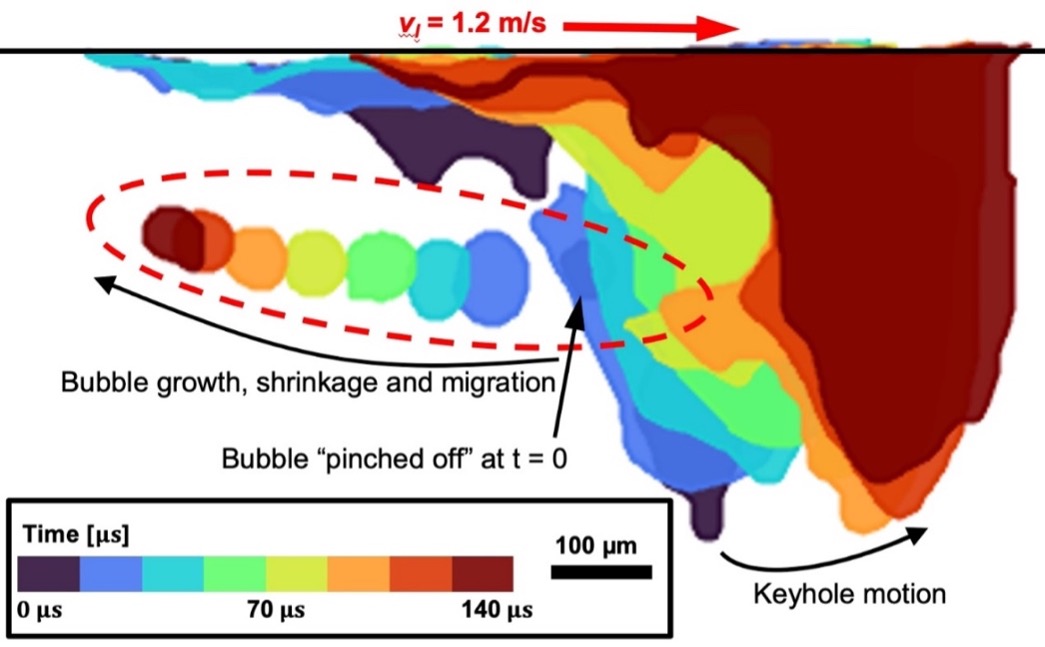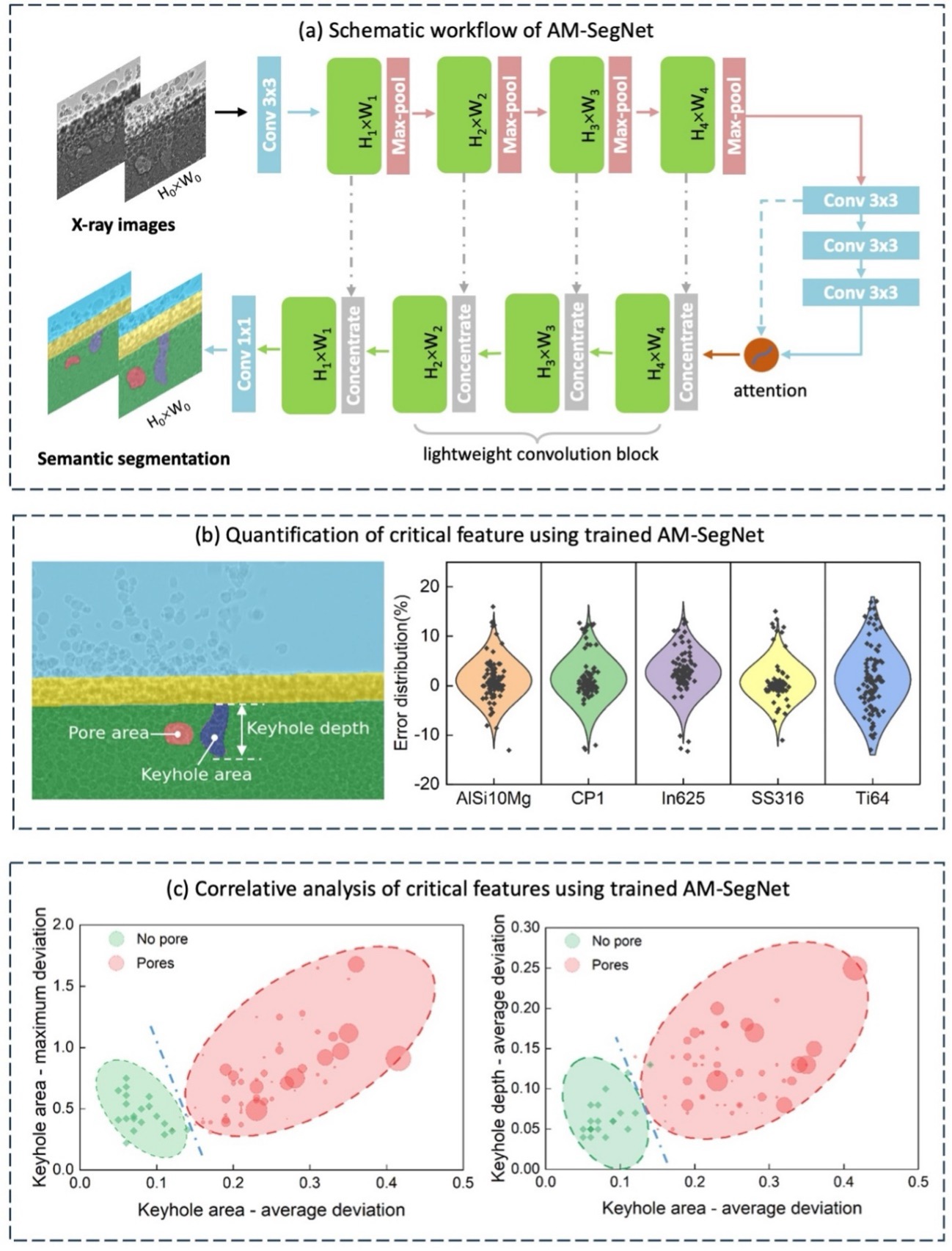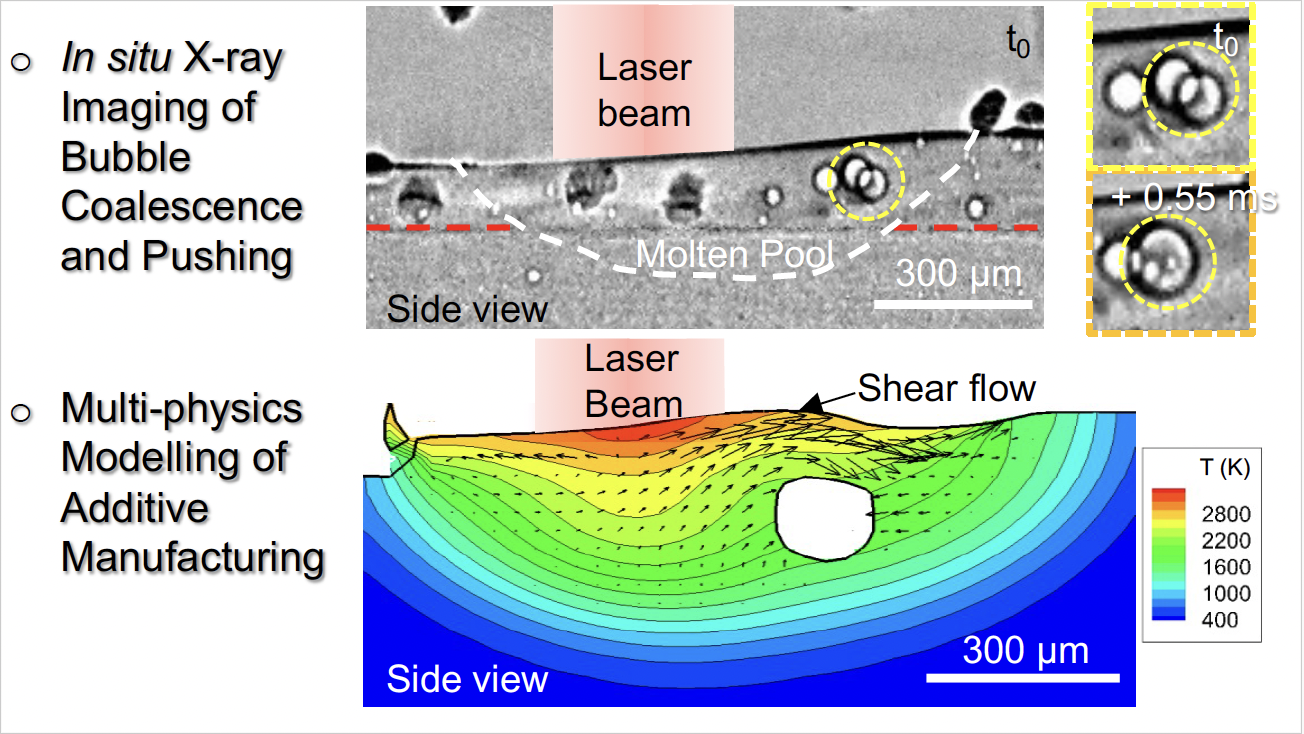All Publications /
Publications:
X1 Case Study C (UCL)
26 / 02 / 24
New insights into laser 3D metal printing provide critical guidance in reducing porosity
Investigators: Prof Peter Lee, Prof Chu Lun Alex Leung
Researchers: Dr Yuze Huang
Collaborators: UKRI-STFC, HRL (USA), Queen’s University (Canada), Argone National Laboratory (USA)
Laser powder bed fusion (LPBF) is an additive manufacturing (AM) technology that is being widely explored for the production of metal parts with design flexibility and reduced material waste. In LPBF, when using high laser energy, a sunken area known as a keyhole, caused by a recoil pressure that pushes molten metal downwards, frequently forms in the material. Keyholes lead to porosity in the printed part, significantly affecting part’s mechanical properties and compromising the printed part. There is a wide range of physical mechanisms before the formation of keyhole, so its dynamics are very complex and difficult to predict.
In this study, we used ultra-fast synchrotron X-ray imaging to capture the keyhole fluctuation, collapse, bubble growth and shrinkage. We found a transition regime between the stable and unstable keyhole regimes, and observed significant trends in keyhole fluctuation frequency across the different keyhole regimes. Our results provide a non-dimensional threshold for predicting the three keyhole regime transitions and the onset of keyhole porosity for different alloys and processing conditions (e.g., laser spot size, laser power, laser scan velocity).
This study offers a significant contribution to understanding and mitigating pore formation in LPBF, paving the way for more reliable and high-performance additively manufactured parts. By harnessing these insights, the additive manufacturing community can push the boundaries of this technology and unlock its full potential for various applications.
This project is supported by MAPP, a collaborative work between UCL, STFC, Queen’s University (Canada), and the Argone National Laboratory.

Publications:
1. Yuze Huang, Tristan G. Fleming, Samuel J. Clark, Sebastian Marussi, Kamel Fezzaa, Jeyan Thiyagalingam, Chu Lun Alex Leung & Peter D. Lee, Keyhole fluctuation and pore formation mechanisms during laser powder bed fusion additive manufacturing, Nature Communications (2022).
More:
Publications
-
X1 Case Study B (UCL)
Impact of powder oxidation during additive manufacturing
Investigators: Prof Peter Lee
Researchers: Prof Chu...
-


